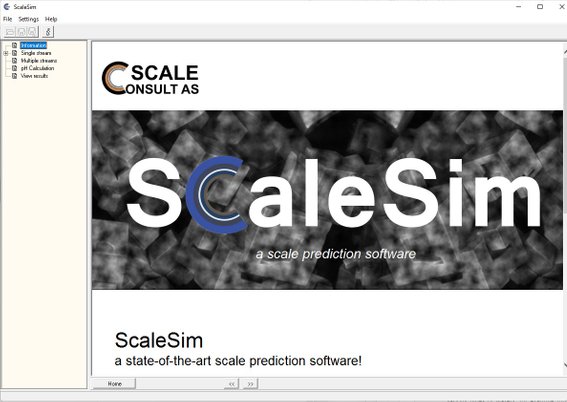ScaleSim - A state of the art scale simulation tool
A new scale prediction software
ScaleSimTM is a new scale prediction software developed by Scale Consult over the last 25 years. The development started whith the scale code developed by Dr. Baard Kaasa PhD work, and has continued since. The code has been markeded as MultiScale for many years. Scale Consult has developed the code further and are now proud to sell it as ScaleSimTM.
ScaleSimTM is a state-of-the-art thermodynamic simulation model that combines the best available models to predict phase properties, salt solubility, scale potential, scale amounts, pH, gas solubility etc. in oil/gas/water systems. The program helps the user to calculate the scale risk in oil/gas/water systems over a wide range of pressures, temperatures, oil/gas compositions and water compositions.
ScaleSimTM includes all the normal scale types:
- Carbonates (CaCO3, FeCO3)
- Sulphates (BaSO4, SrSO4, CaSO4)
- Sulphides (FeS, ZnS, PbS)
- Chlorides (NaCl, KCl)
and many other less common salts and minerals. ScaleSimTM is well tested against experimental data in the range 0-2000 bar and 0-200°C, but model can be used up to 3000 bar and 300°C.
ScaleSim consists of several modules, click on the links to read more about them.
ScaleSim uses the Pitzer model together with thermodynamic relations to calculate properties of the aqueous phase and solubility of salts/minerals. A full Equation of State based PVT model calculates the properties and composition of the oil/gas phase. The two models are fully integrated in the program to calculate 3-phase equilibrium (water-oil-gas) and salt precipitation.
For more information, click the links to read about the differnet modules or contact us.
ScaleSim - Speed and Simplicity
ScaleSim is extremely fast, and a simulation normally takes a few hundreds of a second. Even if you run a full profile simulation with 25 different pressures and temperatures, the simulation is done in less than a second. The results from the simulation are displayed immediately in the program in form of tables in a text file. The results can also be taken directly to a plot program or to Excel, where you can set up tables and graphs that can be copied directly to your report.


